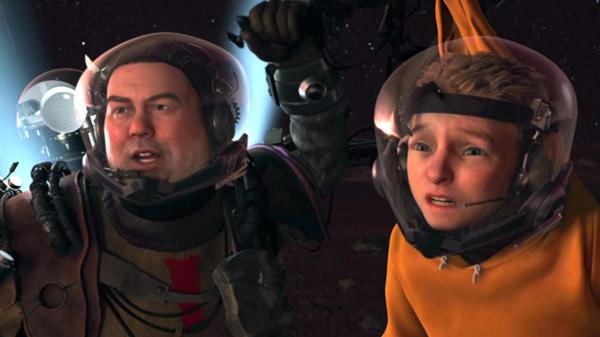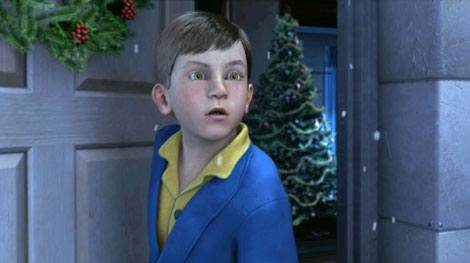I'm aware that Canada has a vast animation culture and wanted to see if there is the same interest in the live action/film industry. I also wanted to find out how well the creatives of the industries were supported by their country, and how well they are promoted.
When looking on the site I noticed some short films by Chris Landreth, someone that I became aware of in class a few weeks ago after watching his Oscar-winning short film Ryan. The film is about Ryan Larkin, a Canadian animator who produced some of the most influential animated films of his time.
"Ryan is living every artist's worst nightmare - succumbing to addiction, panhandling on the streets to make ends meet. Through computer-generated characters, Landreth interviews his friend to shed light on his downward spiral."
On the blog page there is news of Landreth's new short film Subconscious Password (below), which portrays the Uncanny Valley aspect of CGI head on.
"In this short animation, Oscar®-winning director Chris Landreth uses a
common social gaffe - forgetting somebody’s name - as the starting point
for a mind-bending romp through the unconscious. Inspired by the
classic TV game show Password, the film features a wealth of animated
celebrity guests who try (and try, and try) to prompt Charles to
remember the name. Finally, he realizes he will simply have to surrender
himself to his predicament. "
On the blog (http://blog.nfb.ca/blog/2013/05/23/chris-landreth-uncanny-valley-subconscious-password/) Landreth talks about the effect of Uncanny Valley and how we, the audience, find it hard to embrace and believe these characters. He mentions Polar Express and Mars Needs Moms as prime examples of how the Uncanny Valley can be a downfall for the movies that exercise this effect. He says:
 |
| Polar Express, 2004 |
"We stop empathizing with these characters. They are unintentionally disturbing, like moving corpses. This is a big problem with CGI characters: that unshakable perception that they are animated zombies"
I agree with what Landreth says here, as i think the majority of the public would, that there is a certain unbelievable quality to the characters, even though we know from the offset they are CGI, we are somehow being shown these almost real characters to believe that they are real, and not to see them for animations. Below shows the graph that Landreth includes on his blog to illustrate the effect that these unrealistic-real characters have on our perception and connection with them.
Landreth goes on to say "we often settle on one adjective to describe this perception: "Creepy." Once that word becomes part of your vocabulary for a film's characters, it's Game Over for that film. I think the Uncanny Valley is really about our instinct for trust and honesty in imagery. Snow White is clearly a hand-drawn character. She is honest about her non-humanness - so we willingly overlook the artifice of her appearance, and trust her."
When he talks about Polar Express as opposed to Snow White, he explains that the characters are not honest. "On a certain level we're told to believe that they're real, but we can feel that they're not - their eyes don't move quite right, their movements are slightly too fluid." He talks about how we, the audience, feel that we are being 'hoodwinked' by the filmmakers, and we stop trusting: "That's creepy."
Landreth explains that Subconscious Password deliberately explores the Uncanny Valley because he says that the "subconscious processes are like the valley, we project our waking world onto our subconscious mind."
We
stop empathizing with these characters. They are unintentionally
disturbing, like moving corpses. This is a big problem with realistic
CGI characters: that unshakable perception that they are animated
zombies. - See more at:
http://blog.nfb.ca/blog/2013/05/23/chris-landreth-uncanny-valley-subconscious-password/#sthash.Oe3GLcqs.dpuf
We
stop empathizing with these characters. They are unintentionally
disturbing, like moving corpses. This is a big problem with realistic
CGI characters: that unshakable perception that they are animated
zombies.
We often settle on one adjective to describe this perception: “Creepy.” Once that word becomes part of your vocabulary for a film’s characters, it’s Game Over for that film.
I think the Uncanny Valley is really about our instinct for trust and honesty in imagery. Snow White is clearly a hand-drawn character. She is honest about her non-humanness — so we willingly overlook the artifice of her appearance, and trust her. The characters in The Polar Express are not honest. On a certain level we’re told to believe that they’re real, but we can feel that they’re not — their eyes don’t move quite right, their movements are slightly too fluid. We instinctively feel that we’re being hoodwinked by the filmmakers, and we stop trusting: “That’s creepy.”
Because of this, the allure of realistic human CG characters has greatly diminished over the last 10 years or so.
- See more at: http://blog.nfb.ca/blog/2013/05/23/chris-landreth-uncanny-valley-subconscious-password/#sthash.uXiaIIdH.dpuf
We often settle on one adjective to describe this perception: “Creepy.” Once that word becomes part of your vocabulary for a film’s characters, it’s Game Over for that film.
I think the Uncanny Valley is really about our instinct for trust and honesty in imagery. Snow White is clearly a hand-drawn character. She is honest about her non-humanness — so we willingly overlook the artifice of her appearance, and trust her. The characters in The Polar Express are not honest. On a certain level we’re told to believe that they’re real, but we can feel that they’re not — their eyes don’t move quite right, their movements are slightly too fluid. We instinctively feel that we’re being hoodwinked by the filmmakers, and we stop trusting: “That’s creepy.”
Because of this, the allure of realistic human CG characters has greatly diminished over the last 10 years or so.
- See more at: http://blog.nfb.ca/blog/2013/05/23/chris-landreth-uncanny-valley-subconscious-password/#sthash.uXiaIIdH.dpuf











